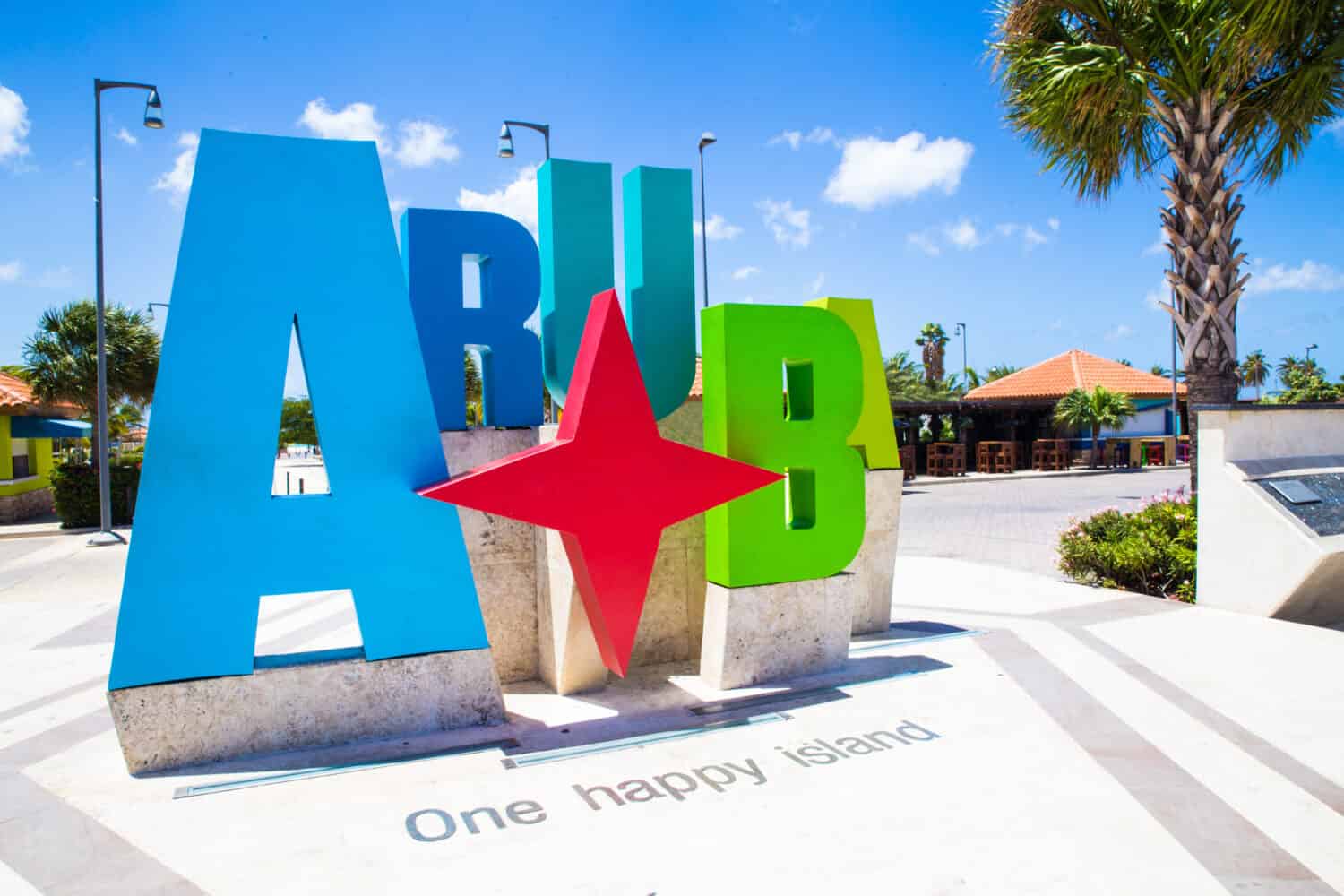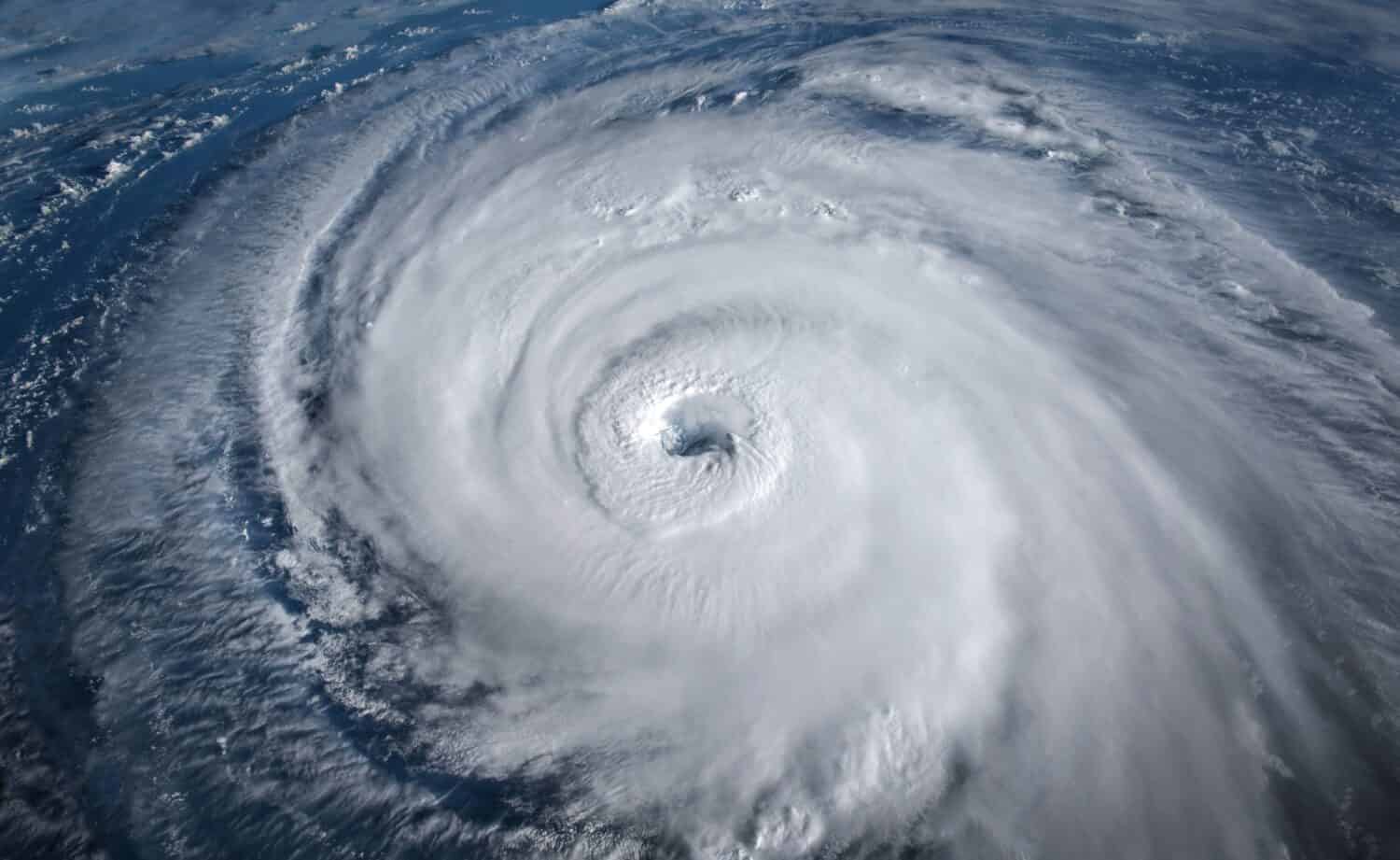Aruba is located in the Southern Caribbean, outside the main hurricane belt. As a result, the island is generally less prone to direct hits from hurricanes when compared to other Caribbean islands. However, Aruba has taken a few direct hits over the years. And even when this alluring island isn’t in the direct path of a hurricane, it can still experience indirect effects such as heavy rains and strong winds from nearby systems. The official hurricane season in the Atlantic Basin, which includes the Caribbean, runs from June 1st to November 30th each year. While the majority of hurricanes occur, between August and October, historically speaking, Aruba is more likely to experience inclement weather earlier in the season. So, when does hurricane season end in Aruba? And when was the latest hurricane the island ever weathered? Keep reading to discover the answers and more!

The official hurricane season in the Atlantic Basin, which includes the Caribbean, runs from June 1st to November 30th each year.
©Steve Photography/Shutterstock.com
Aruba
Aruba is located in the southern part of the Caribbean Sea, approximately 15 miles (24 km) off the coast of Venezuela, South America. It is one of the islands that make up the ABC Islands (Aruba, Bonaire, and Curaçao) and is part of the Kingdom of the Netherlands. The proximity to the South American mainland contributes to Aruba’s unique cultural and geographical characteristics. Aruba’s economy relies heavily on tourism. The island is known for its beautiful beaches, favorable climate, and vibrant tourism industry, which is the main driver of its economy. Aruba’s government has actively promoted tourism. The island attracts a large number of international visitors, particularly from the United States, Canada, and Europe.
Aruba has been successful in attracting visitors throughout the year, thanks to its exceptionally favorable climate.

Aruba’s economy relies heavily on tourism.
©littlenySTOCK/Shutterstock.com
Climate
Aruba has a semi-arid climate, with relatively low rainfall throughout the year. The average annual rainfall of 20 inches (500 mm) is considerably lower than many other Caribbean islands and contributes to the arid conditions. Aruba’s rainy season is from October to January, with November and December being the wettest months. During this period, the island may experience increased cloud cover and occasional rain showers. The rainfall in Aruba is often characterized by short, intense bursts of rain rather than prolonged periods of precipitation. These showers are usually followed by sunny weather. The arid climate of Aruba is a result of its location outside the main hurricane belt, the influence of the trade winds, and its proximity to the South American mainland. Due to the limited rainfall, Aruba relies heavily on desalination plants and other methods of water production to meet its freshwater needs.

Aruba’s rainy season is from October to January, with November and December being the wettest months.
©AnthonyK/Shutterstock.com
When Does Hurricane Season End In Aruba? Latest Hurricane Ever and More!: Tropical Storms Bret
Though Aruba is less prone to hurricanes than much of the Caribbean, the island still takes hits from time to time. The folks in Aruba must brace themselves every time a hurricane is named Bret. It would seem that hurricanes named Bret have an affinity for Aruba. Storms named Bret affected the island in 1993 and 2023.
Bret 1993
Tropical Storm Bret was a weather system that formed in the Atlantic Ocean in late June 1993. It affected several Caribbean islands, including Aruba. Bret developed into a tropical depression on June 18, 1993. By the next day, the tropical depression had strengthened into Tropical Storm Bret. The storm tracked west-northwest passing through the Southern Caribbean. It approached the coast of Venezuela and then turned to the northwest, heading toward the ABC Islands: Aruba, Bonaire, and Curaçao. On June 21, Bret passed directly over Aruba as a tropical storm, bringing heavy rain and gusty winds to the island.
Bret caused localized flooding on the island. However, it did not reach hurricane strength during its passage over Aruba.
Bret 2023
Bret 2023 formed in the Atlantic with an initial wind speed of 17 miles (28 km) on June 15th, 2023. Initially moving northeast at 15 km/h, the storm reached a diameter of 207 miles (333 km) per hour. On June 22, 2023, it clocked a wind speed of 68 miles (111 km) per hour. This classified Bret as a tropical storm. The city of Arasji in Aruba took the brunt of the storm, with Bret making landfall on the morning of June 24, 2023. At that time, the storm had a wind speed of 46 miles (74 km) per hour and a diameter of 115 miles (185 km). coastal flooding from 15-foot (4.5 m) swells and power outages resulted from the storm.
When Does Hurricane Season End In Aruba? Latest Hurricane Ever and More!: Hurricane Bonnie
On June 29, 2022, the storm that would become Hurricane Bonnie menaced the Southern Caribbean. With wind speeds of 26 miles (43 km) per hour, the storm produced heavy rainfall and spiral rainbands. Ahead of the storm, curfews were implemented and schools were closed. Per usual, aside from minor flooding, Aruba was not heavily impacted by the storm. Bonnie is a notable storm in that it crossed from the Atlantic into the Pacific basin.
When Does Hurricane Season End In Aruba? Latest Hurricane Ever and More!: Hurricane Felix
Hurricane Felix, a powerful Category 5 hurricane in September 2007, passed near Aruba, causing high winds and heavy rainfall. Although Felix did not make direct landfall on the island, it passed near Aruba as a tropical storm on September 2, 2007. The storm brought significant amounts of rain and gusty winds to the island, leading to localized flooding and disruption to routine. The effects of Hurricane Felix in Aruba were primarily associated with the heavy rainfall and strong winds it generated, highlighting the potential for indirect effects even when a hurricane does not make landfall. Hurricane Felix occurred during the peak of the Atlantic hurricane season. Its development and intensity served as a reminder of the potential for powerful storms during this period. The accurate forecasting of Hurricane Felix’s path and intensity allowed for timely warnings and evacuation efforts, helping save lives.
Hurricane Matthew
While Hurricane Matthew did not directly hit Aruba in 2016, the island did experience some effects, including beach erosion, from the storm. Hurricane Matthew passed through the Central and Western Caribbean in October 2016, affecting several countries and islands in the region. While Aruba was not in the direct path of the storm, it experienced indirect impacts such as increased wave action, which resulted in beach erosion.
Hurricane Matthew was a powerful Category 5 hurricane at its peak intensity. It had maximum sustained winds reaching up to 160 miles (260 km) per hour, making it an extremely dangerous and destructive storm. Matthew followed a track through the Central and Western Caribbean, affecting several countries and islands in the region. It made landfall in Haiti, Eastern Cuba, the Bahamas, and the Southeastern United States. The storm surge generated by Matthew resulted in widespread coastal flooding and beach erosion. The total economic cost of Hurricane Matthew was estimated to be billions of dollars.
When Does Hurricane Season End In Aruba? Latest Hurricane Ever and More!: Hurricane Iota
While Aruba was not directly in the path of Hurricane Iota in November 2020, the island experienced some effects from the storm, including increased rainfall and strong winds.
Hurricane Iota was a powerful Category 5 hurricane primarily affecting Central America, particularly Nicaragua and Honduras. It made landfall in Nicaragua on November 17, 2020. As the storm moved westward across the Caribbean, it brought bands of heavy rain and gusty winds to Aruba, as well as other nearby islands. Hurricane Iota’s defining characteristics include its rapid intensification, impacts on Central America, and its occurrence in the late part of the hurricane season. As such, Iota is quite possibly the latest hurricane to affect Aruba.
Thank you for reading! Have some feedback for us? Contact the AZ Animals editorial team.








